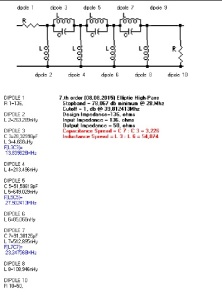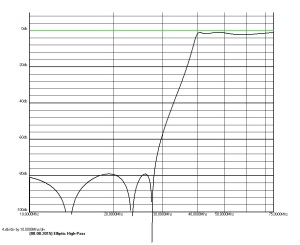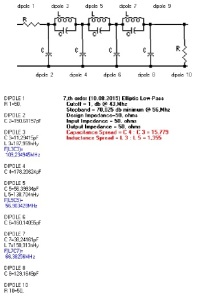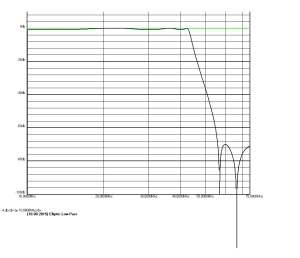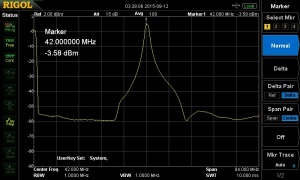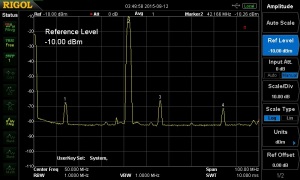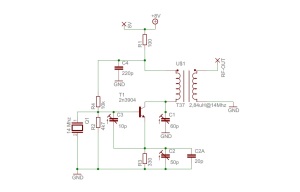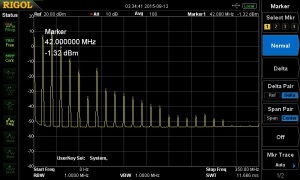Some time ago i bought a HF LP filter from Ebay. As normal it did come with minimal documentation.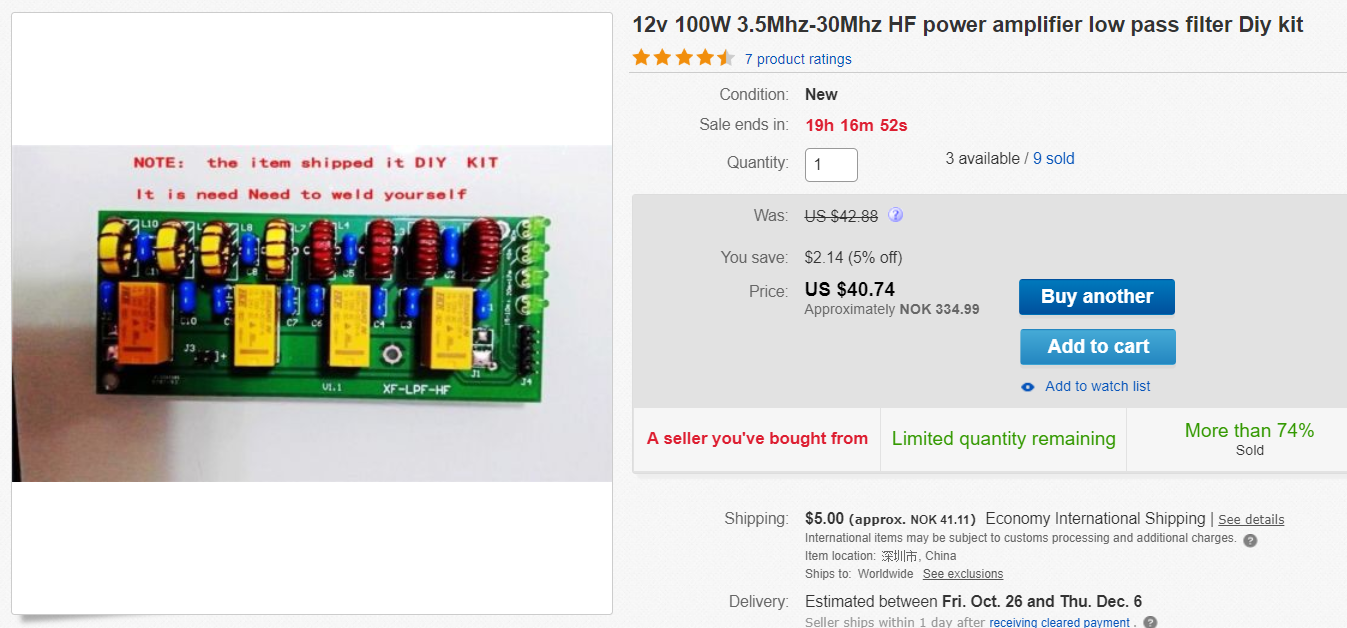
After some e-mails back and forth i managed to get the required documentation form the seller.
Here are the component values.
C1 C3 C5:820P
C2:1500P
C4 C6:430P
C7 C9 C11:180P
C8:330P
C10 C12:100P
L1 L2:22T (Red toroide Amidon T50-2 ?)
L3 L4:16T (Red toroide Amidon T50-2 ?)
L5 L6:11T (Yellow toroide Amidon T50-6 ?) (L7 & L8 on the PCB)
L7 L8: 8T (Yellow toroide Amidon T50-6 ?) (L9 & L10 on the PCB)
The PCB is not 100% according to the buildings instruction, but as the capacitors are in sequential order the inductors are also follow a sequence just add 2 in the inductor name after L4.
I suspect that running 100W on these toroides might be a bit than what they are capable of.
I have done a simulation in AADE filter software for all filters. The AADE web site is no longer active but the software can be found on other sites.
80 m filter.
The filter has a roll off at about 4,5 Mhz. making it capable for 80m but not 60m.

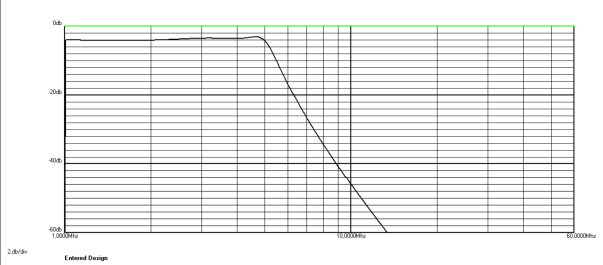
60 m & 40 m filter.
This filter has a roll off close to 9 Mhz. and is capable of 60m and 40m.
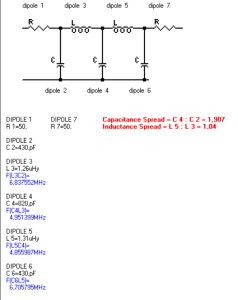
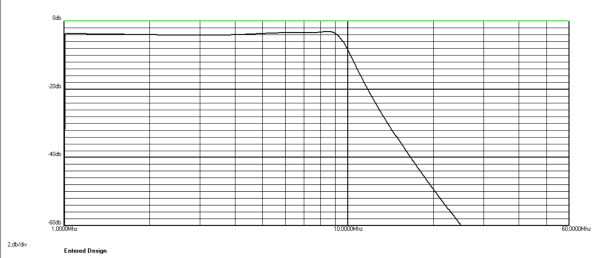
30 m, 20 m & 17 m filter.
This filter has a roll off close to 19,9 Mhz. and is capable of 30 m to 17 m.
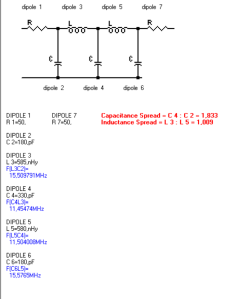

15 m, 12 m & 10 m filter.
This filter has a roll off close to 35,5 Mhz. and is capable of 15 m to 10 m.
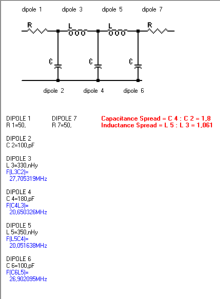
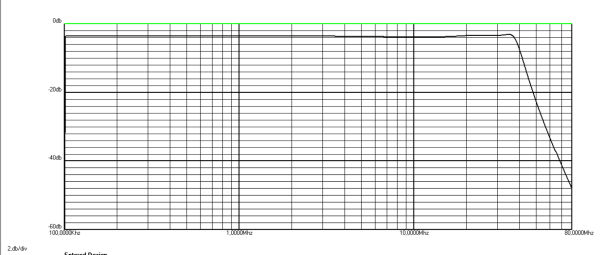
Schematics.
The schematics where made by tracing the PCB. I can not guarantee

Harmonics.
When the filter is assembled i will do a sweep with the spectrum analyzer to determine the actual filter curve.
As long as I’m got 43 dB suppression on the fundamentals it will comply with the ITU recommendations found in ITU-R SM.329-10.
Some fine tuning might be required to obtain this attenuation.
This will be a on of project going through the winter and in the end be a part of a complete linear with approximately 50 W SSB at 12V.
